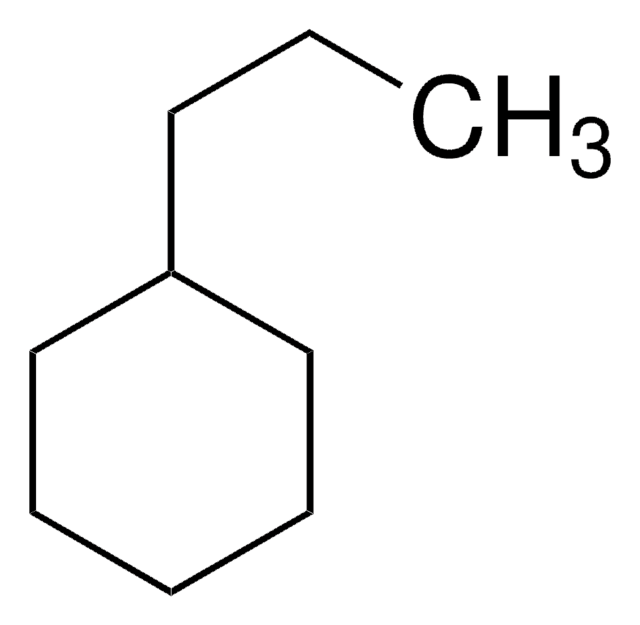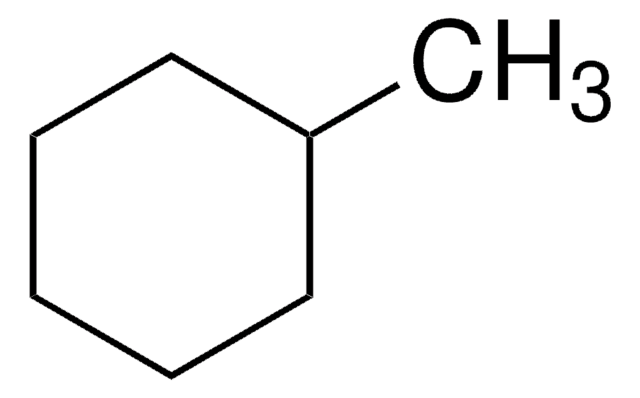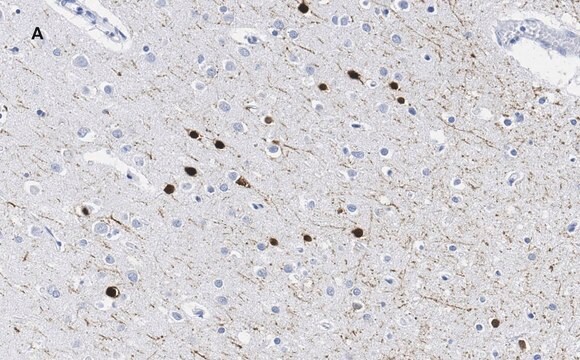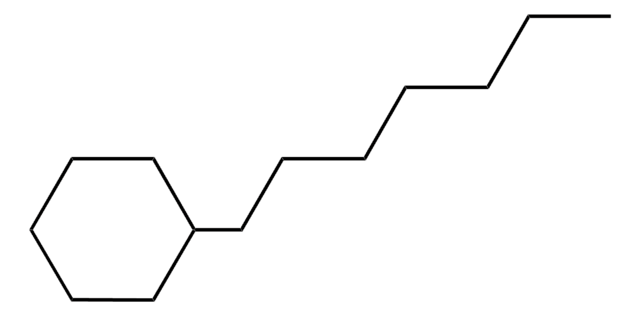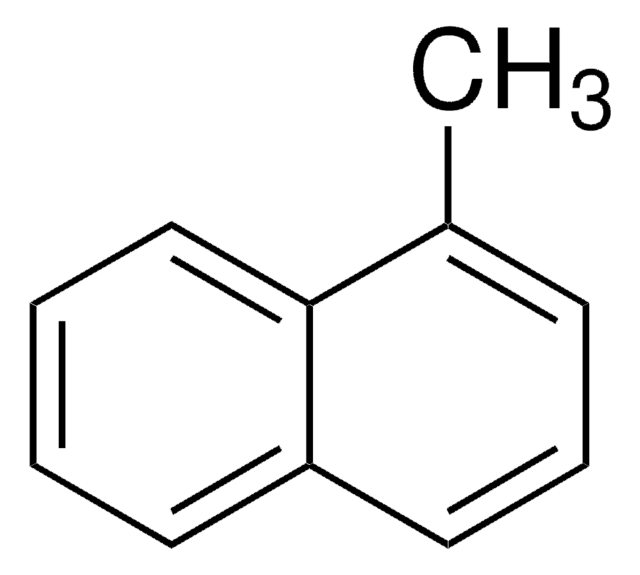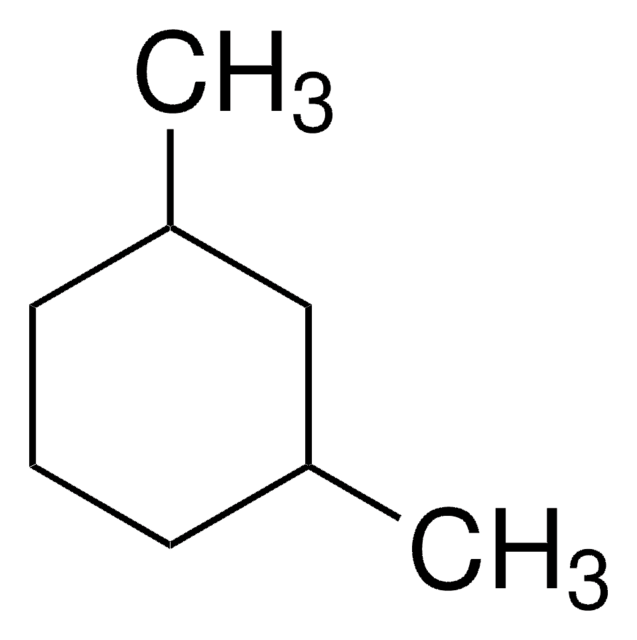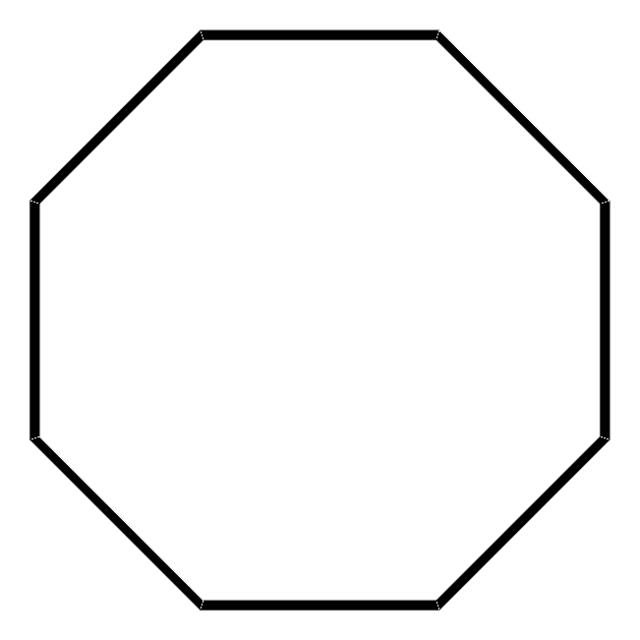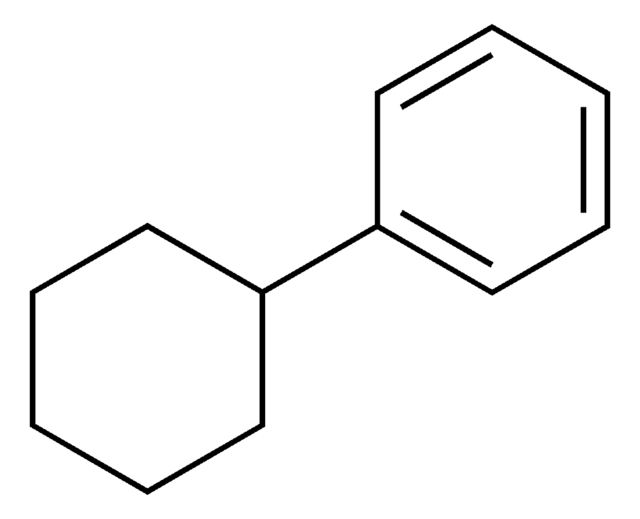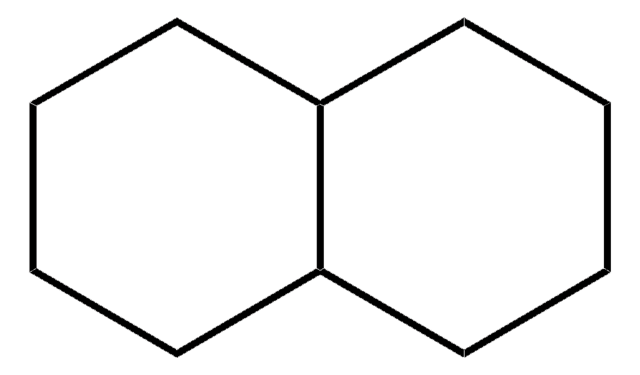110388
Butylcyclohexane
≥99%
Sinônimo(s):
1-Cyclohexylbutane
About This Item
Produtos recomendados
pressão de vapor
2.9 mmHg ( 37.7 °C)
Nível de qualidade
Ensaio
≥99%
temperatura de autoignição
475 °F
índice de refração
n20/D 1.441 (lit.)
p.e.
178-180 °C (lit.)
pf
−78 °C (lit.)
densidade
0.818 g/mL at 25 °C (lit.)
cadeia de caracteres SMILES
CCCCC1CCCCC1
InChI
1S/C10H20/c1-2-3-7-10-8-5-4-6-9-10/h10H,2-9H2,1H3
chave InChI
GGBJHURWWWLEQH-UHFFFAOYSA-N
Informações sobre genes
human ... CYP1A2(1544)
Procurando produtos similares? Visita Guia de comparação de produtos
Categorias relacionadas
Descrição geral
Palavra indicadora
Warning
Frases de perigo
Classificações de perigo
Flam. Liq. 3
Código de classe de armazenamento
3 - Flammable liquids
Classe de risco de água (WGK)
WGK 3
Ponto de fulgor (°F)
105.8 °F - closed cup
Ponto de fulgor (°C)
41 °C - closed cup
Equipamento de proteção individual
Eyeshields, Faceshields, Gloves, type ABEK (EN14387) respirator filter
Escolha uma das versões mais recentes:
Já possui este produto?
Encontre a documentação dos produtos que você adquiriu recentemente na biblioteca de documentos.
Os clientes também visualizaram
Protocolos
-Xylene; Nonane; Decane; 1,2,4-Trimethylbenzene; Butylcyclohexane; Naphthalene
Nossa equipe de cientistas tem experiência em todas as áreas de pesquisa, incluindo Life Sciences, ciência de materiais, síntese química, cromatografia, química analítica e muitas outras.
Entre em contato com a assistência técnica